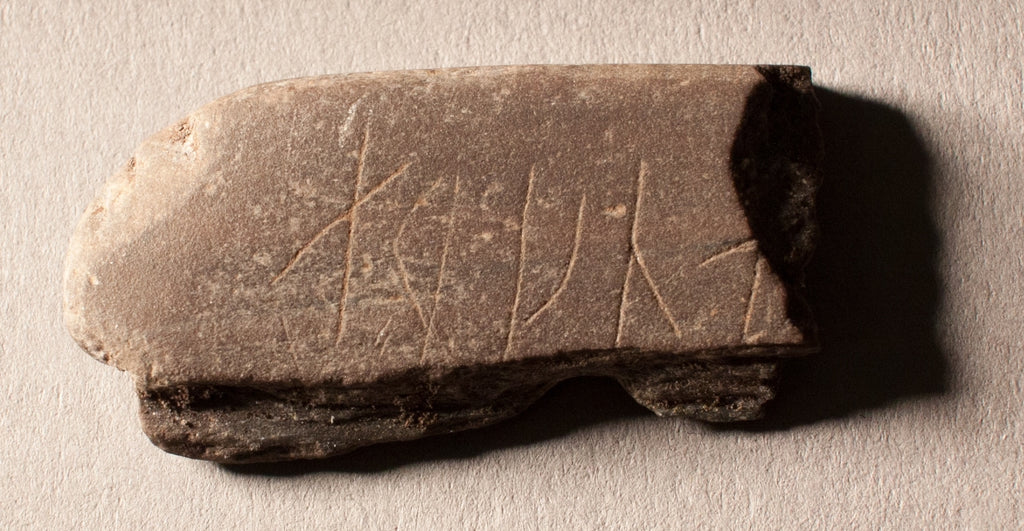Viking-Age Stone With Runes Excavated In Norway
The Vikings used to sharpen their knife and sword on the small stone which we call the whetstone. It was in 2017 that the archaeologists found the Viking-era stone as the whetstone. What's special is that there is a runic carving on the stone.
The whetstone was unearthed during the construction project of the railway in Oslo, Norway. After researching the stone, archaeologists concluded that the stone dated back to 1,000 years ago.

The underside of the whetstone found in Oslo, Norway
In many Viking findings, especially the stones, we found the runic inscription which either tells a story or to honor someone in the Viking Age. Runes are the letters that the Vikings used to convey information or to cast the spell. Each rune had a way to pronounce and a specific sign. In Norse mythology, it was Odin who introduced runes to the world. But to gain the ability to decipher runes, Odin sacrificed himself on the Yggdrasil tree of life.
In the Viking age, not many people could read runes. And this system of letters was not commonly used to communicate. Rather, the Vikings used runes to deliver their thought, desire, and call for the help from the gods. The runic letters were used in Norway and other Scandinavian parts from the 6th century to around 15th century.
Regarding the whetstone that found in Oslo, who carved the runes on the stones remained a mystery.

Runic inscription on the whetstone found in Oslo, Norway
Archaeologists tried to decipher what was written on the whetstone. They agreed that they were the runes "æ, r, k, n, a". But this was not enough to know the meaning of the inscription. They believed that the runes were to spell a name or to spell "scared" or "ugly" in Viking language. One of the most interesting theorized meanings was the "pain". Some Viking enthusiasts believed the runes inscription read "feel the pain" which was closely related to the sharpening tool.
But because it was the runic letters and it was on the tool for sharpening, it might present the hope of cutting the things very well. It was kind of a magic word to convey the wish of the Vikings.
The creator or the writers of the runic inscription on the whetstone didn't seem to be a trained rune carver. Though runes were widespread and respected on large scale in Scandinavia, many found themselves lack of knowledge to write runes.




